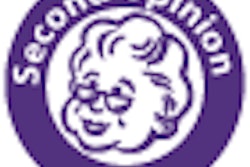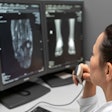
It's do or die for radiology as the specialty struggles to fend off proposals in the U.S. Congress mandating severe cuts in reimbursement. Radiology proponents are predicting economic Armageddon if the cuts are passed, but their arguments may not be strong enough to counter the powerful forces of healthcare reform.
Radiology is already woozy from three years of severe reimbursement cuts to outpatient imaging that began with the Deficit Reduction Act (DRA) of 2005 and were topped off by an ongoing economic downturn that's strangled hospital capital equipment purchasing. With the national agenda set on healthcare reform, imaging has found itself a convenient target in the debate over how to wring more savings and efficiency out of a healthcare system that most Americans agree is broken.
While President Barack Obama's healthcare reform plans have been generating most of the headlines, a related goal is to save money in the Medicare system -- $313 billion, to be specific, to go toward $950 billion "to offset the cost of healthcare reform over the next 10 years," the president announced in his June 13 radio address.
Unfortunately for radiologists, the technical component of imaging reimbursement is yet again one of the first targets for such savings, according to Cynthia Moran, assistant executive director for government relations at the American College of Radiology (ACR) in Reston, VA. "We are a very popular place to go when people are looking to cut Medicare costs," said.
Of concern to the ACR is Obama's proposal for the Department of Health and Human Services (HHS) to increase the equipment utilization factor for advanced imaging (such as MRI and CT) from 50% to 95%. The utilization factor is used to calculate technical component payments under the Medicare system; at the current level, it assumes that imaging equipment is in use half of the time during a normal work week.
Based on a Medicare Payment Advisory Commission (MedPAC) recommendation, the change could result in almost $1 billion in savings over five years, the Congressional Budget Office estimated.
Still adjusting to DRA
The Obama administration's proposal has caused considerable consternation at the Access to Medical Imaging Coalition (AMIC), a lobbying group founded in 2006 by the ACR and other physician, vendor, and patient groups in response to the DRA. No matter that on June 19, the House introduced healthcare reform legislation calling for a less draconian change in the utilization factor -- to 75%.
"There's not even a slight chance of advanced diagnostic imaging reaching [this level] of output," said Tim Trysla, AMIC's executive director. "Our biggest concern is that this continues to be a money grab [from radiology]." Even the less-drastic 75% rate could cut payments for CT and MR alone by more than 40%, Trysla claimed.
What's the rationale behind the proposals? They're based on a March 2009 MedPAC report that recommended that the utilization factor be increased to 90% for equipment that costs more than $1 million. But there are a number of problems with MedPAC's assumptions, according to Trysla.
For one, the data on equipment utilization levels were collected in 2003, prior to DRA-related cuts. Furthermore, MedPAC's survey was limited to six urban areas and two modalities (MR and CT) among 80 providers. And transcripts of an April 19, 2006, MedPAC meeting warned, "This survey is a first step.... It was not nationally representative and it was not designed to determine equipment use rates. Its intent was to assess the feasibility of getting use rate data from the survey."
Trysla points out that the federal government has already been successful in driving down imaging spending.
"Spending on advanced diagnostic services is down 19% since 2005, and imaging use has essentially flattened. The president and now the House are seeking more reductions in this area without looking back and seeing the net impact of those policies," said Trysla, citing statistics from a 2006 study by the Moran Company. "Instead of accepting the MedPAC recommendations without proper scrutiny, the administration should direct HHS to launch a public-private partnership that would collect data from equipment scanning logs that measure the actual time an imaging machine is in use."
Arguments against the cuts
Although the utilization-rate proposals specifically target advanced diagnostic imaging, they could have a trickle-down effect to more lower-priced modalities. MR and CT scanners often pay the way for less expensive modalities, points out Dr. James Borgstede, chair of the ACR's Rural Practices Committee, who testified June 24 before the House.
"I told them that, should they increase the rate, this will likely result in the closing of a lot of imaging centers, because it's mathematically and physically impossible to use a scanner 95% of the time," Borgstede said.
Factors such as scans that require radiologists to be in attendance, and preparation and exam time of elderly or very ill patients, affect the utilization rate, he said.
"The other thing that I articulated is that some of the lower-end imaging modalities are subsidized by the higher-end modalities. A better way to put that is, for a radiologist to justify putting imaging into a rural setting, they need to offer comprehensive services. They're not going to come out just to do a couple of mammographies," he said.
In the aftermath of the DRA, certain modalities have already been hard hit by reimbursement reductions. An analysis by the Moran Company found Medicare reimbursements for dual-energy x-ray absorptiometry (DEXA) fell by 40% from 2006 to 2007.
"The DEXA scan has been hit extremely hard. Certain MRI codes were cut, too -- brain MRIs were cut 48%," said Moran, whose husband owns the eponymous research firm. "All codes are at a similar risk, if you look at results of the DRA. Now, with a utilization rate cut, some of these services are looking to be impossible to add outside a hospital setting," she said.
In separate testimony at the June 24 hearing, the efficiency of today's machines was just one of a host of compelling arguments proffered by diagnostic imaging vendors.
"The capital and operating costs of a typical 1.5-tesla MR scanner of today cost less than one half of what it did five years after introduction, and yet offers dramatically increased diagnostic performance," said Thomas J. Miller, CEO of the Workflow and Solutions Division at Siemens Healthcare of Malvern, PA.
And imaging has reduced the need for exploratory surgery while improving survival rates. Even uninsured Americans, according to Miller, have higher screening rates than Europeans, due to the widespread accessibility of imaging technology.
Legislative solutions that radiologists support
There are numerous reform proposals the ACR is fully behind, said Moran, including the Medicare Improvements for Patients and Providers Act (MIPPA) of 2008, which mandated accreditation for advanced modalities as well as appropriateness guidelines.
"We support a utilization policy for advanced imaging which would mandate that referring physicians have to use decision-support tools before they order an advanced imaging test," Moran said. "We far prefer Congress to go in that direction as opposed to utilization cuts based on no data."
The ACR is also pushing for better disclosure in physician self-referral cases and for scrapping the sustainable growth rate physician payment formula in favor of a slight raise in the Medicare Physician Fee Schedule.
Timeline for reform
Legislation moves slowly, of course, and the process can be confusing to the uninitiated. The House legislation with the 75% utilization factor cut, informally known as the Tri-Committee draft bill, was authored by the three House committees with jurisdiction over health policy -- Ways and Means, Energy and Commerce, and Education and Labor -- and the legislation has been through hearings in all three committees. The week of July 13 will see more marking up of healthcare reform legislation, followed by House floor consideration from July 27-31, when summer recess begins.
Various Senate committees are expected to release bills the week of July 6, with Democrats intending to pass a bill before that body's summer break on August 7.
However, according to the ACR's legislative timeline Web page, consideration of Senate legislation could easily slip to the week of September 7 if one of the committees is late to the legislative party with its bill. Ultimately, a joint Congressional bill might reach the president's desk by October 2009 and be effective January 2010.
One thing is certain: It's too early to call the fight.
"My sense is that this is still in play -- it's not a slam dunk that [the utilization factor will be set] at 95%. I'd hate to have that put out that it's obviously going to go up. Then Congress is going to say, 'look, the radiologists are going to accept this,' " Borgstede said.
Moran is more sanguine, however, noting that a cut to the technical component of reimbursement rates is likely to come from somewhere, be it Congress or the Obama administration. The ACR and AMIC are still in the thick of it, however, and are urging citizens to contact their Congressional representatives via a Web site set up to make the case for the value of medical imaging.
"We know that what MedPAC has recommended is that the first bite of the apple should be equipment utilization rates for scanners north of $1 million," Moran said. "Subsequent cuts could be across the board. I would recommend to my compadres in other medical specialties that this issue is very much alive and should be addressed by all health professionals."
By Alexandra Weber Morales
AuntMinnie.com contributing writer
July 1, 2009
Related Reading
ACR lobbies against RBMs, utilization rate changes, June 26, 2009
Siemens' Miller defends imaging in House testimony, June 26, 2009
U.S. House bill would increase utilization factor to 75%, June 23, 2009
RBMA: Equipment use rates far lower than President estimates, June 19, 2009
Senate report offers details on accreditation, Stark disclosure, May 6, 2009
Copyright © 2009 AuntMinnie.com



















